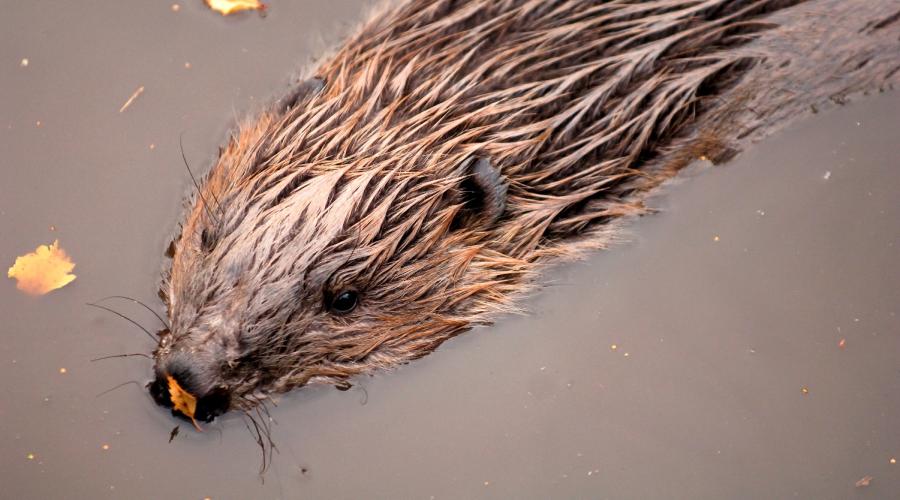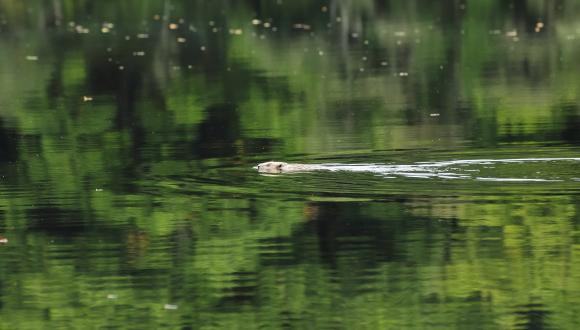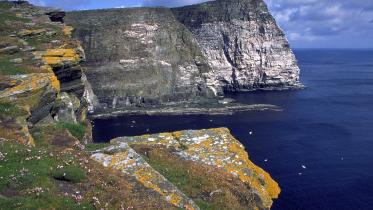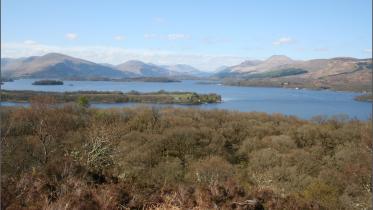
Lead nature agency publishes beaver licensing statistics
28 May 2020
NatureScot today published a report on the challenging balance to be made between protecting beavers in Scotland and helping to prevent serious damage to some farmers’ land.
Beavers are ecosystem engineers. They provide huge benefits to people and nature, improving water quality and flow, and creating new habitats that foster many other species. However, their actions can sometimes cause serious impacts for land managers such as flooding of fields and crops. In some circumstances it may be necessary to manage beavers and their dams under special licences issued by NatureScot.
Beavers became a European Protected Species on 1 May 2019. NatureScot reports that between 1st May and 31st December 2019, it issued 45 species licences which permitted either lethal control or dam removal. These were granted when there was no other effective solution to prevent serious agricultural damage. Five of the licences permitted dam removal or manipulation only. All licences were issued for the purpose of preventing serious damage to agriculture and all but one of these (97.5%) were issued on land classified by Scottish Government as Prime Agricultural Land. Evidence of serious damage included waterlogged fields and crops, as well as erosion on riverbanks and embankments.
One additional licence was granted to allow an experienced ecologist to live-trap beavers from sites where lethal control may otherwise have been employed. NatureScot also refused 33% of licence requests.
Under these licences,15 beavers were trapped and moved to either Knapdale or a trial reintroduction project and fenced sites in England, 83 beaver dams were removed, and 87 beavers were shot by trained and accredited controllers. All lethal control licence holders were contacted about the possibility of trapping on their land, but live-trapping is not always possible on every site for a number of reasons, including the topography and general nature of the site and how beavers use it; and the behaviour of individual animals. Based on survey information, lethal control and trapping has taken place within around 13% of territories. The proportion of the overall range of beavers in Tayside covered by licences is likely less than 10%, with control being carried out on around 5%.
The report recommends continued work with licence-holders exploring viable alternatives to lethal control, improving understanding of the impact of control measures on the Tayside population through survey and population modelling, and supporting work that better recognises the benefits of beavers for nature.
Robbie Kernahan, NatureScot Director of Sustainable Growth said:
“It’s always been clear to both us and our partners that lethal control of beavers will sometimes be necessary under licence as a last resort when other mitigation is unlikely to be effective. Some of the well documented and most serious issues have occurred on the most productive areas of agricultural land in Scotland. Due to their generally being well-drained, low-lying and flat, these areas are often vulnerable to beaver burrowing and dam building.
“As we work with farmers to trial new and innovative measures for reducing the impacts of beavers on this type of ground, we hope to see less need for control measures in the coming years. We also expect to see the beaver population expanding away from high conflict areas and into suitable habitat where beavers can thrive and bring the positive benefits we want to see.”
The beavers in Tayside and surrounding areas are the result of unauthorised releases or escapes, with many animals settling on Prime Agricultural Land where they have had serious impacts. Classified Prime Agricultural Land makes up around 13% of Scotland’s land cover and, as the most productive and important farmland, it is of national importance.
NatureScot trapped and re-located 15 beavers in 2019, helping projects throughout the UK from Knapdale to Northumbria and Dorset. NatureScot will consider opportunities for conservation translocations of beavers from high to low conflict areas within existing catchments to improve resilience of existing populations. With Scottish Government we also will consider other alternative measures as part of a wider beaver mitigation strategy.
NatureScot also operates the Beaver Mitigation Scheme and in the first year, provided advice and support for over 40 cases and entered into 10 management agreements to implement mitigation. This work included installing flow devices, tree protection work, exclusion fencing and bank protection to protect agricultural land, infrastructure and property.
NatureScot has begun trialling water-gates this year, which aim to exclude beavers from areas of land where conflicts are arising or likely, as well as trialling other techniques, such as automated early-warning systems to alert people to beaver impacts, allowing rapid intervention before problems occur. Although water gates are only likely to be successful in certain situations, a number of potential water gate sites have been identified which, if successful, have the potential to fully resolve problems on 12 current licences where lethal control is permitted and partially resolve issues on a further 6 licences.
The full statistics on 2019 mitigation are available




